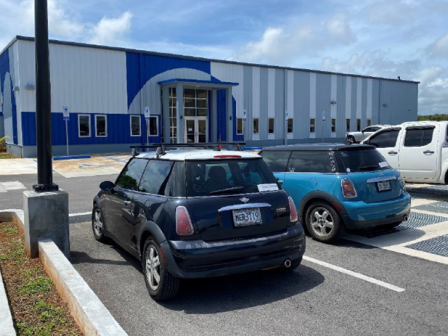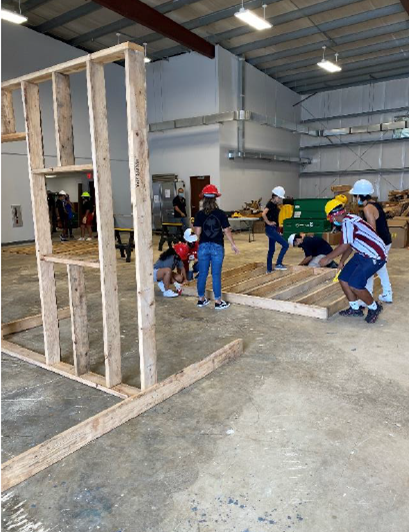
Archived Content
This site contains information that has been considered archived and will no longer be updated.
EDA and GCA Partner to Upskill Guam’s Workforce
In 2006, when the U.S. Marine Corps made plans to expand its footprint on Guam, one logistical challenge became immediately apparent: the project would require nearly three times more construction workers than were available in the Territory. For leaders in Guam’s construction industry, however, the dilemma was nothing new. They’d been dealing with a shortage of skilled workers since the hotel building boom of the 1980s.
According to Bert Johnston, Director of Education at the Guam Contractors Association (GCA), roughly half of the approximately 5,000 skilled tradesmen on Guam in 2006 were H-2B visa holders who came to the territory for short stays to fill persistent gaps in Guam’s workforce. But relying on itinerant workers was untenable for the long-term economic development of this gateway to Micronesia. The lack of a sufficiently robust, local workforce was exacerbating construction costs on the island. In addition to a slowdown in commercial development created by the shortage of skilled laborers, housing expenses had skyrocketed; the cost of building a new home doubled from $100 to $200 per square foot.
To help relieve pressure on the building sector, GCA established a new vocational training program, the GCA Trades Academy. The initiative proved popular among skills-seeking Guamanians, but limited student capacity meant it was unable to maximize its potential impact on Guam’s labor market.
“We basically had no classrooms, no facilities, and had to beg and borrow for space,” recalls Johnston. The academy operated out of a patchwork of rented rooms at a local high school, as well as a vacant warehouse it quickly outgrew.

In 2016, with the support of a $2 million Economic Adjustment Assistance grant from the Economic Development Administration (EDA) — an award later supplemented by EDA disaster assistance funding — the GCA purchased two 10,000-square feet structures in the northern village of Barrigada, which it expanded and outfitted to house 18 multipurpose rooms as well as shop space.
Since moving into the new facility, Johnston reports the academy is seeing capacity enrolment for its NCCER-accredited training. More than 300 Guamanians are annually receiving instruction in high-demand occupations like carpentry, HVAC maintenance, plumbing, welding, and project management. A recent follow-up grant from the Department of the Interior’s Office of Insular Affairs is allowing the academy to install solar panels that will eventually make it energy self-sufficient, improving its operational resilience and lessening its environmental impact.
Perhaps most importantly, the availability of skilled workers on Guam has started to stabilize with GCA estimating approximately 8,500 people are employed in the construction industry, nearly three-quarters of whom are locals. According to the Bureau of Labor Statistics, the construction trades contribute to almost ten percent of the island’s workforce.
“I can't say we’re responsible for the full complement of that, but we definitely contributed to it,” says Johnston. “One of the things we really appreciate is the fact that EDA had confidence in us to be able to pull this off.”
The Economic Adjustment Assistance (EAA) program is EDA’s most flexible program, making grants to help communities plan, build, innovate, and put people back to work through projects designed to meet local needs. Learn more about EDA’s EAA funding opportunities.
